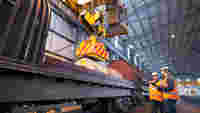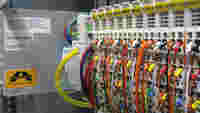Railway Systems for the Most Demanding Conditions

Why WAGO?
Rugged Electronics for Harsh Environments
Increasing Demands on the Technology
Compatibility and Long-Term Availability

Rugged Electronics for Harsh Environments
Increasing Demands on the Technology
Compatibility and Long-Term Availability
The customers of the railway technology manufacturer expect a product lifespan of at least 20 years. Quality of service and spare parts availability are also important. However, the innovation cycle of software and electronic components does not align with these requirements. The engineering responsible for control technology at Kirow has had several disappointing experiences with electronics suppliers: “We were repeatedly surprised by the discontinuation of important parts. WAGO’s product philosophy is much better in this regard, as new components are always backward compatible with previous versions. This continuity is also very important to us.”
The WAGO-I/O-SYSTEM 750 meets the special requirements of the railway sector.
The compact WAGO-I/O-SYSTEM reduces cabling to the central controller.
Backward compatibility of new controllers ensures continuity for a product’s life cycle.
Text: Marco Schrader, WAGO
WAGO at Work
Customer Applications: Railway Systems
The control and error messaging system for the SBB (LSS-CH) replaces 23 different control systems with WAGO’s automation technology.
